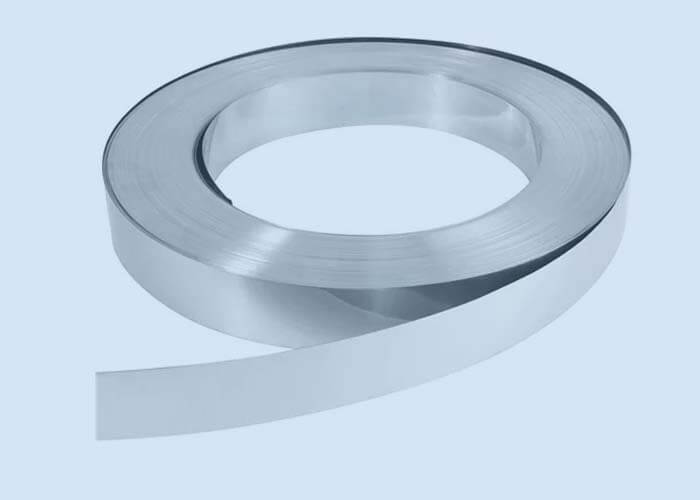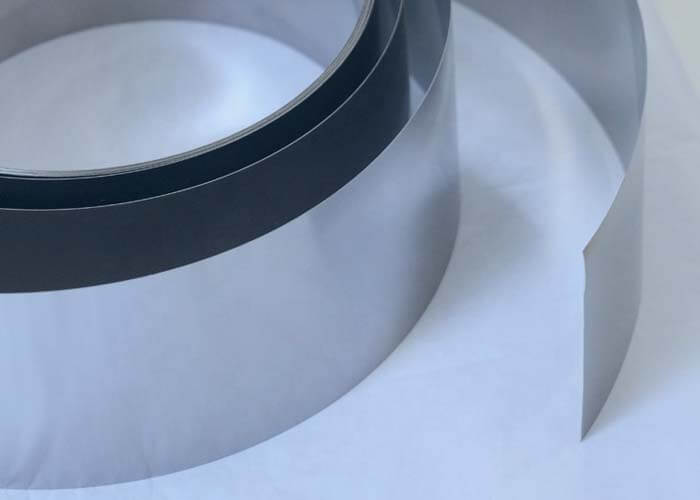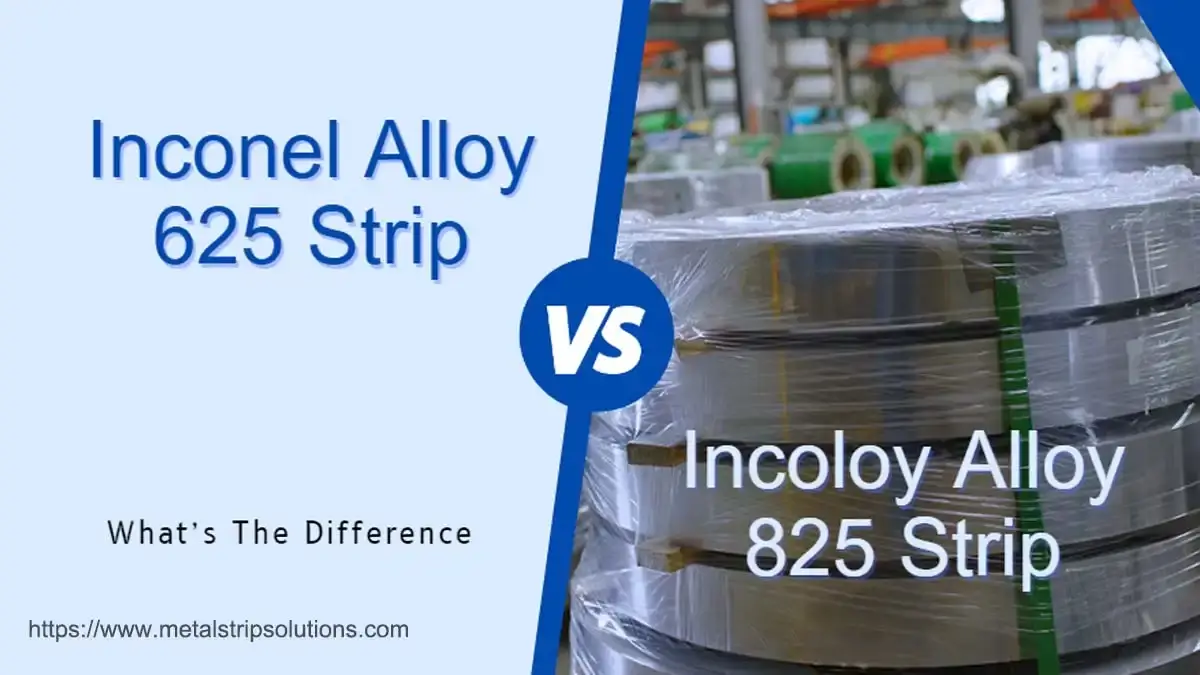The article discusses the difference between two nickel-based alloy strips, Inconel 625 strip and Incoloy 825 strip. Both alloys are designed to provide exceptional resistance to many corrosive environments.
However, there are distinct differences between the two. Incoloy 825 contains a higher chromium content, whereas Inconel 625 strip has a higher molybdenum content, leading to variations in their corrosion resistance under different environmental conditions.
Today, we will delve into a comprehensive comparison of these popular nickel-based alloy strips – Inconel 625 and Incoloy 825 – highlighting their similarities, disparities, and optimal applications in various scenarios.
Let’s keep reading.
What Is Inconel 625 Strip?

Inconel alloy 625 strip is one of the most versatile nickel alloys on the market. When it comes to corrosion resistance, strength, and fabricability, nickel alloy 625 strip is one of the best options for your application.
Inconel alloy 625 strips also referred to as the UNS N06625, W.Nr. 2.4856 refers to strong solution that has been strengthen by the presence on nickel making it have a high resistance to corrosion, great tensile strength, high oxidation and excellent fatigue properties.
Properties of this Inconel alloy 625 strips make it an excellent product for use in the manufacture of chemical equipment’s, aerospace structural parts, and aero-engine parts.
Inconel alloy 625 strips has a density of 8.44 g/cm³.
What is Incoloy 825 Strip?

Molybdenum, copper, and titanium are added to the nickel-iron-chromium alloy for making Incoloy 825 strips.
Due to the alloy’s chemical makeup, it is exceptionally resistant to many corrosive conditions.
The wide range of applications for Incoloy 825 strips is due to its resistance to both general and specific corrosion under various conditions.
The Incoloy 825 strip is resistant to acids and reducing agents due to the molybdenum and copper contents.
Chromium provides resistance to oxidizing environments, including nitric acid solutions, nitrates, and oxidizing salts.
Strips made of Incoloy 825 are particularly resistant to sulfuric and phosphoric acids.
These Incoloy 825 strips are employed in manufacturing acids, oil, and gas well pipes, pollution-control machinery, and nuclear fuel reprocessing.
High levels of corrosion resistance are seen in Incoloy 825 strip. It is resistant to corrosive attack, pitting, crevice corrosion, and strain cracking in oxidizing and reducing conditions.
For pressure vessels operating at up to 525°C, Incoloy 825 is approved.
The Incoloy 825 strip mechanical characteristics enable outstanding performance in challenging circumstances.
The microstructure can change when subjected to temperatures above 1000°F.
Difference Between Inconel 625 Strip and Incoloy 825 Strip
Chemical Composition
Inconel 625 Alloy Strip Chemical Composition(%) | ||
| Element | Min | Max |
| C | – | 0.1 |
| Si | – | 0.5 |
| Mn | – | 0.5 |
| P | – | 0.015 |
| S | – | 0.015 |
| Al | – | 0.4 |
| Cr | 20 | 23 |
| Cu | 1 | 1.4 |
| Fe | – | 5 |
| Mo | 8 | 10 |
| Nb | 3.15 | 4.15 |
| Ni | Balance | |
| Ti | – | 0.4 |
Incoloy 825 Alloy Strip Chemical Composition(%) | ||||||||||
| Ni | Fe | Cr | Mo | Cu | Ti | C | Mn | S | Si | Al |
| 38.0-46.0 | 22.0 min | 19.5-23.5 | 2.5-3.5 | 1.5-3.0 | 0.6-1.2 | 0.05 max | 1.0 max | 0.03 max | 0.5 max | 0.2 max |
Corrosion Resistance
Incoloy 825 strip provides enhanced resistance to corrosion from organic acids like formic acid or acetic acid, as well as environments containing chlorides such as seawater or brackish water.
Conversely, Inconel 625 strip demonstrates heightened corrosion resistance against reducing acids like sulfuric or phosphoric acid, along with environments abundant in chlorides or halides.
In terms of oxidation resistance, Inconel 625 outperforms Incoloy 825 in general.
Mechanical Properties
Inconel 625 Strip Mechanical Properties
| Temper | Annealed (Grade1) | Solution-treated (Grade 2) | ||
| Tensile Rm | 120 | ksi (min) | 100 | ksi (min) |
| Tensile Rm | 827 | MPa (min) | 690 | MPa (min) |
| R.p. 0.2% Yield | 60 | ksi (min) | 40 | ksi (min) |
| R.p. 0.2% Yield | 414 | MPa (min) | 276 | MPa (min) |
| Elongation | 30 | % (min) | 30 | % (min) |
Incoloy 825 Strip Mechanical Properties
| Tensile Strength, min. | Yield Strength, min. | Elongation, min. | Elastic Modulus | |||
|---|---|---|---|---|---|---|
| Mpa | ksi | Mpa | ksi | % | Gpa | 106psi |
| 690 | 100 | 310 | 45 | 45 | 206 | 29.8 |
Applications
Inconel 625 Strip Applications:
Inconel 625 Alloy has a high level resistance against corrosion which makes it very common in the gas and oil industry. 625 alloys are also very popular in the aerospace industry.
- Aerospace
- Chemical Processing
- Heat Exchangers
- Construction
- Bridges
- Petrochemical Industry
- Ship Building
- Engineering
- General Structural Purposes
Incoloy 825 Strip Applications:
The high nickel content of inconel 825 alloy strip makes it virtually immune to stress corrosion cracking.
Applications in the oil and gas market include pipes, tubes and fittings for oil and gas extraction in heat exchangers, evaporators, washers, immersion pipes and offshore piping.
Conclusion
Both alloys have outstanding properties and are most widely used in industries.
The strength of Inconel 625 strips and Incoloy 825 strips is approximately the same.
Choosing the optimal material depends on the specific application requirements, which must be carefully evaluated before making a decision.
At HZW, we are equipped to manufacture Inconel 625 strip and Incoloy 825 strip products tailored to your exact specifications. Contact us today for your alloy strip project.












